Marketing to Generation Z: 11 important things to keep in mind
 Olha Lypnytska
Olha Lypnytska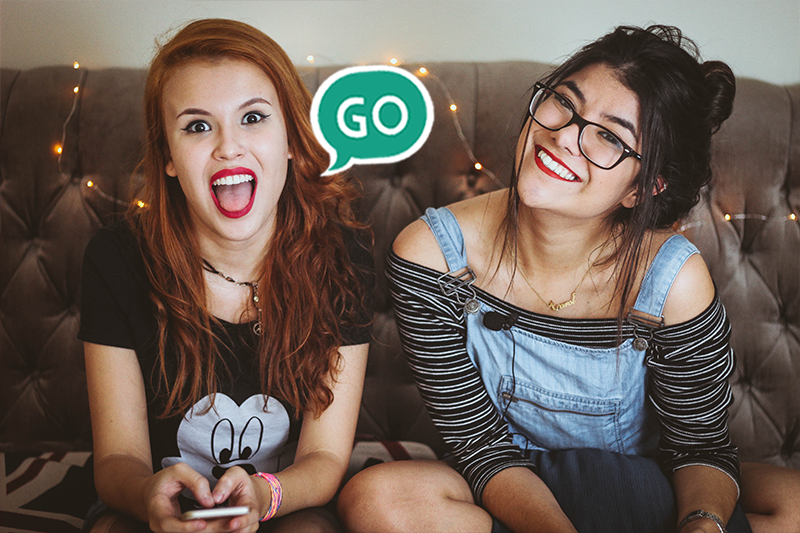
Generation Z - who are they?
iGeneration, Gen Tech, Gen Wii, Centennials, Net Gen, Digital Natives, Plurals, Post-Millennials, Generation Z or Generation Zero… All of these are just different names for the generation of people born between the mid-1990s and early 2000s.
There are no clear boundaries when one generation ends and another begins. However, there are three factors that shape generations: parenting, economics and technology.
In other words, Gen Z is a demographic cohort that is brought up by Generations X and Y. This is a generation that does not remember a time without Internet, Social Media or cell phones and did not experience the economic crisis of the 1990s.

Table of Contents
Generation Z: Consumer Behavior
8. Self-awareness and responsibility for own future
9. Unique identity and diversity
In 2019 Generation Z reached 32% of the global population. It is 2,56 Bln people that even outnumbered Millennials who make up only 31,5% of the Planet’s population today. What does it mean? It means that Net Gen will be the main economic force and companies must get ready for this.
So what makes them different?
Generation Z: consumer behavior
“It’s like someone in the U.S. who was investing in China in the early 90s. There’s a huge opportunity here for companies that are willing to take some risk and bet on the future,”
Gregg Fisher, portfolio manager of the Gerstein Fisher Multi-Factor Growth Equity fund
By 2020 Gen Z will make 40% of all consumer shopping purchases, which is equal to $44 billion in buying power. Moreover, it is predicted that this generation is going to have an unmatched purchasing power estimated at $150 billion. Already nowadays, Generation Zero influences 93% of family spending [1].
What should brands know about iGeneration?
1. Online & Mobile
“I once opened my phone after being gone for one day, and I had 219 text messages,”
10-year-old Kiera [2]
Look carefully at the following numbers [3]:
nowadays, 95% of teenagers own a mobile phone or at least have access to it while in 2014-2015 the figure was only 73%
the “Always online” segment grew from 24% in 2014-2015 to 45% in 2018
at the same time the segment of those who “go online” at least a few times per day is 44%
27% of Gen Z can’t stay without the Internet longer than 1 hour and 69% can’t stand 8 hours without access to their mobile phone [1]
62% will choose no college degree and unlimited Internet access rather than a college degree and no Internet access
Key Takeaway:
The way in which Generation Zero consumes information shows us that a mobile-first strategy should be a priority for those companies that see Generation Z as their target audience.
Here is how Coca-Cola is using this information.
In 2016, being a sponsor of the Olympic Games in Brazil, Coca Cola, as a part of their #ThatsGold campaign [4], targeted Brazilian teenagers (13 to 20 years old). Since not everyone can have an opportunity to buy tickets for the Olympic Games, Coca Cola wanted to make sure that nobody was left behind. Using Facebook Live videos and Instagram Stories, the company shared “gold moments” of the event in real time. The goal was to build up participation before the Games, engagement during the event and keep the vibes going after.
The Coca Cola Brazil Campaign reached 21 million teenagers. That’s 77% of the Brazilian teen population. 90% of those were reached on mobile.
2. Tech-savvy
Digital natives or iGeneration… even the name itself shows that they are closely acquainted with technology.

Source: Usertesting.com [5]
Being an advanced Internet user affects their consumer behavior. How?
60% of Gen Z shoppers won’t use apps or websites that load slowly or have complicated navigation
42% said they would participate in an online game for a campaign and 43% would write a product review
60% of Generation Z are more likely than average consumers to hang up if nobody answered their call in the first 45 seconds
the vast majority of iGen believes that it is technology’s fault when error messages or 404 pages pop up [5].
Key Takeaway:
Although Gen Z is digitally educated generation, it is also very demanding and impatient. They have high expectations and low tolerance for errors and mistakes. Visually oriented design, fast loading speed, seamless experience on different devices, shareability, gamification and at the same time simplicity and clearness - this is what Digital Native generation expects.
Open-source software is an example of how some companies are successfully using high technology erudition of Generation Z to their own advantage. Among such companies are world technology leaders as Adobe, Facebook, Google, Huawei, IBM, Intel, LinkedIn, Microsoft, Netflix and many others.
3. 8-second filter
The attention span of an average representative of Generation Z is only 8 seconds [6]. They use so-called “8-second filter” to decide whether they like what they see or not. In comparison, Millennials have a 12-second attention span.
Jean Twenge, psychology professor at San Diego State University, while studying student laptop habits noticed that students were switching between tasks every 19 seconds.More than 75% of students closed their computer windows in less than 1 minute [5].
Reduction of the average concentration span is not surprising. Gen Z is a multitasking generation, all the time switching between different devices and platforms. Modern teenagers are using about 5 screens (phone, desktop, tablet, TV, iPod or any other portable music player) simultaneously while the previous generation had a maximum of 3.
Key Takeaway:
With Gen Z every second is precious. It is absolutely normal that in the information-rich environment we have to allocate the attention in the most efficient way. Short, personalized and interactive content might help to grab a user’s attention.
Realizing this trend, companies like McDonald's, Pandora, 4F, Citi Bank, Media Markt, TUI, Travelist, Interia, DailyMail, Business Insider etc. found an ideal solution - web push notifications.

A web push notification is a permission-based marketing tool that enables brands to send short messages to subscribers directly to their desktops/mobile screens even if the user is on the website of a competitor.
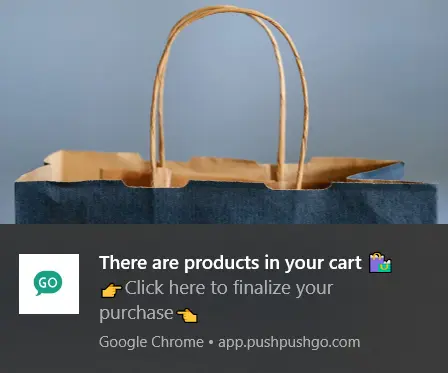
This technology:

does not collect any personal data
is resistant to Adblock
tracks user behavior on the site and allows for customized offers
sends messages in real time directly to user desktops regardless whether the user is on your site or not
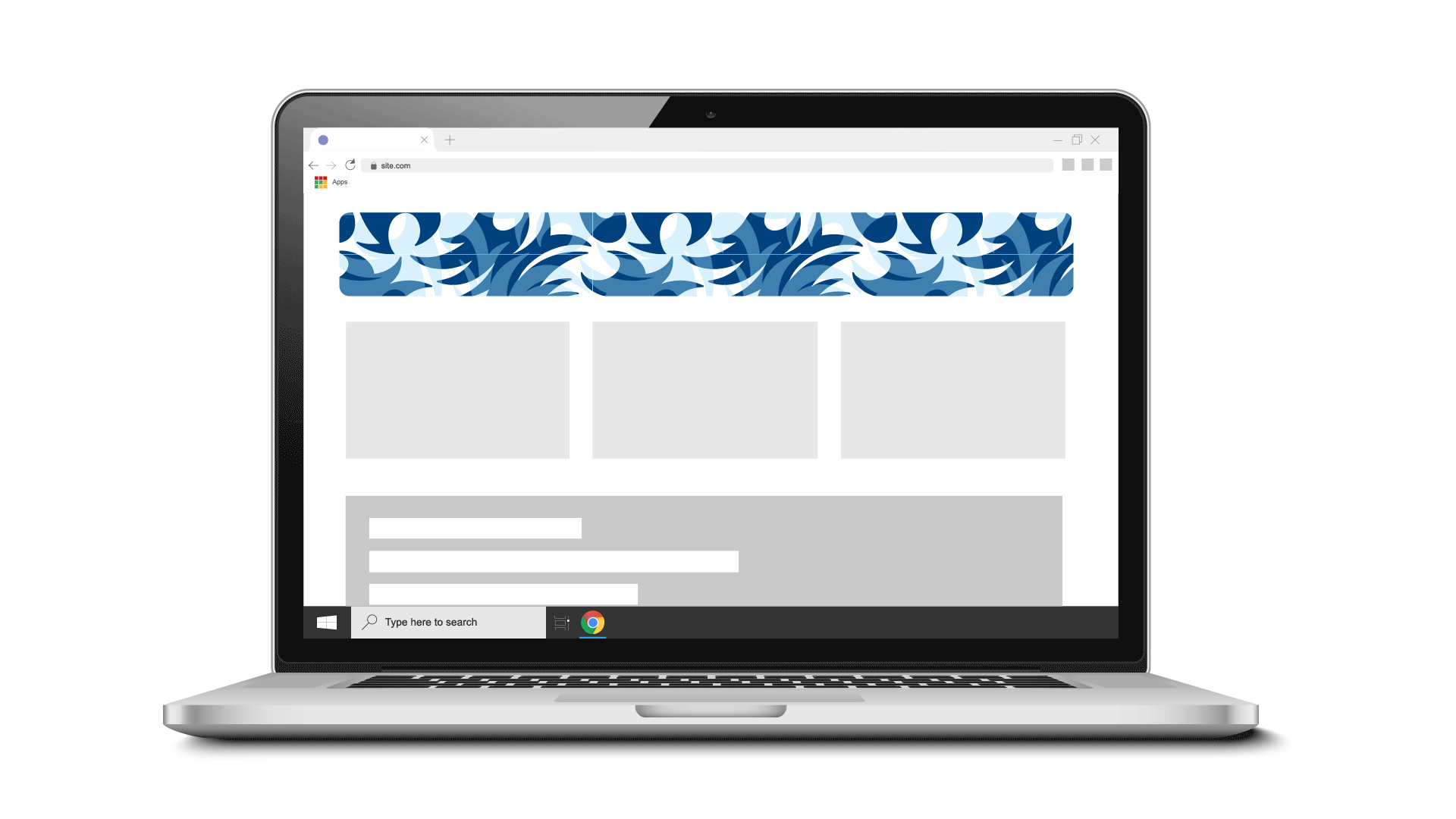
Reach Gen Z with the help of web push notifications! Start testing now - always for free up to 500 subscribers!
4. Reality & authenticity
In recent years influencer marketing has proven to be highly effective in terms of advertising products or services. Gen Z is not an exception. However, reality & authenticity go first.
63% of the Post-Millennial generation trusts more real people than pictures of the celebrities and a perfect life [7]. Opinions of friends and peers are more valuable and has greater impact on their final decision to buy.
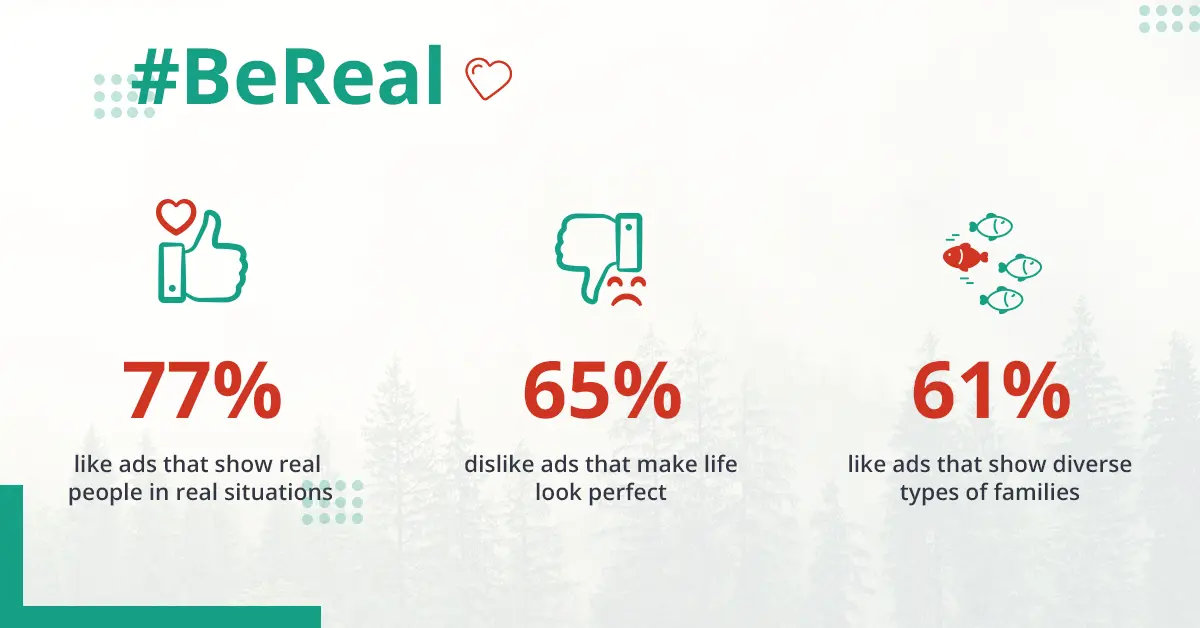
Key Takeaway:
Real people, real data, real reviews and authentic experiences - this is what Generation Z expects from brands. Publish user-generated content or partner with influencers that share your values.
Have a look at Sprint and its #LiveUnlimited campaign, where the company partnered with influencers whose lifestyle is in line with the main idea of the campaign. As a result, it received huge social media coverage. This video presented all influencers that took part in Sprints campaign.
5. Security first
Although Generation Zero is 25% more likely to provide their personal details in order to receive personalized offers, they still care about the security of their data. Gen Z is a cohort of people that are more likely to read Terms and Conditions or Privacy Policy.
For example, after a data-sharing scandal that involved Cambridge Analytica and Facebook, almost half of young users deleted their accounts [8]. That’s why platforms that allow users to stay anonymous or make temporary posts (Snapchat, Instagram, Whisper) are more popular among teenagers.
It is time. #deletefacebook
— Brian Acton (@brianacton) March 20, 2018
Key Takeaway:
It is important for companies to find a balance between personalization and privacy. Any deviation in one side or the other can lead to defeat.
Therefore, technologies that, on the one hand, allow the user to remain anonymous and, on the other, allow companies to provide personalized experience for their website visitors are gaining popularity. It’s the classic “Win-Win” situation.
Web push notifications fit perfectly to these criteria. After a user subscribes to receive notifications, he is assigned with a unique id, no names or emails. Thanks to behavior tracking, it is possible to send highly customized content to your subscribers. Moreover, in the subscription form users can select topics they would like to hear from you about.
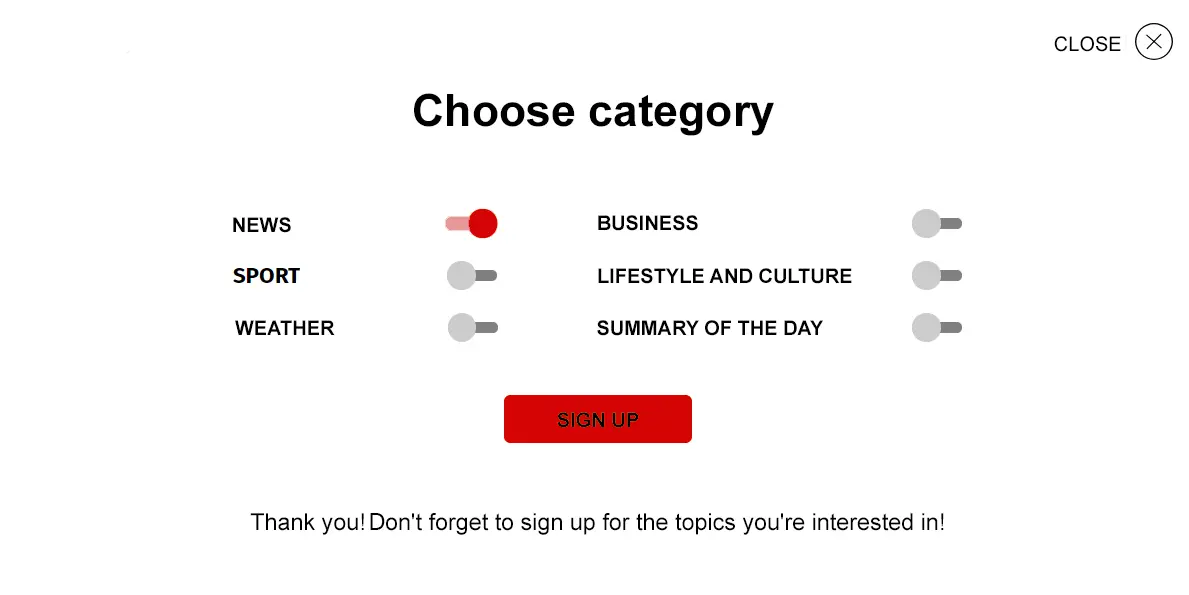
6. Simplicity and minimalism
Generation Z values clarity and simplicity in everything whether it is an online website or a collection of clothes.
Do you remember the times when brands aimed to make their logos bigger and more visible? There was even a meme that the logo of Ralph Lauren was going to be so big that at some point it would replace the person :)
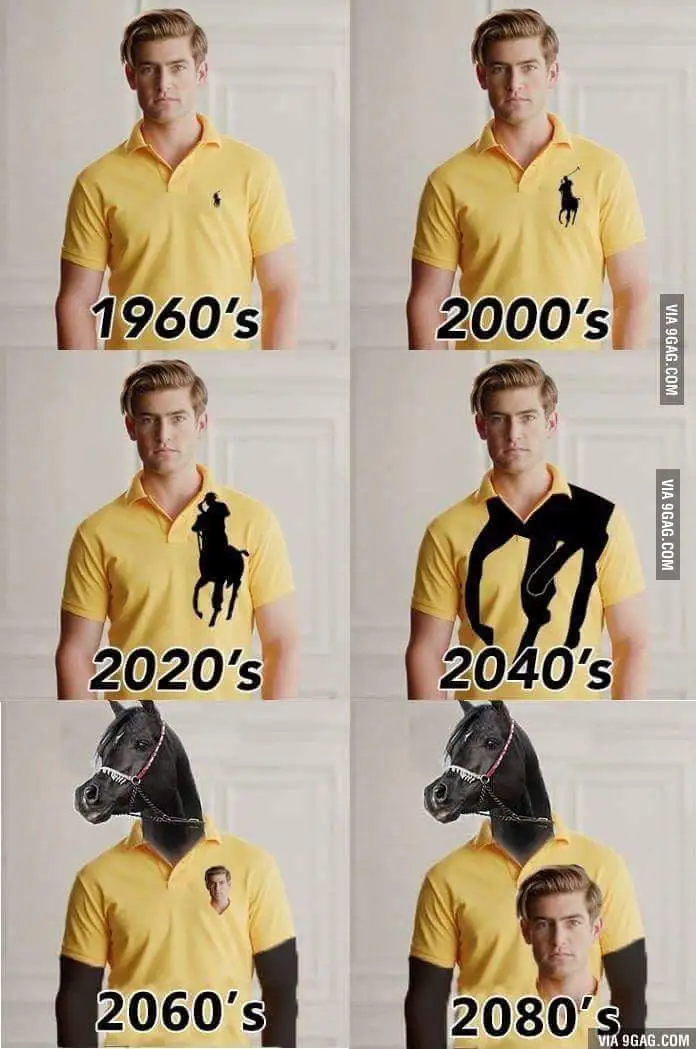
Today we can observe the opposite situation. YouTube is full of video tutorials about how to remove brand logos. Companies such as Nike, Adidas, Banana Republic, Puma etc. are trying to hide their brand tag using tagless labels [9].
Casual and minimalistic style in the clothing is on the rise.
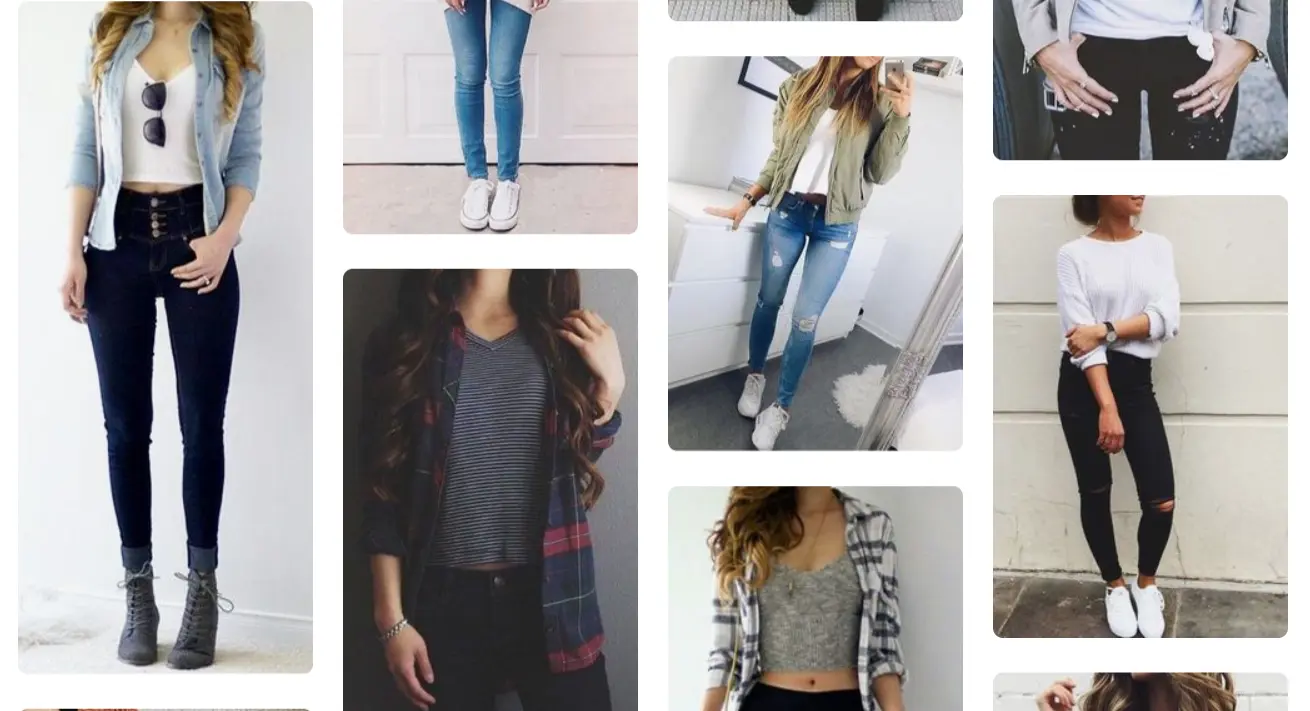
Brands are simplifying their logos:
Pepsi

Shell

Key Takeaway:
Simple design, fewer steps, fewer clicks, less text to read… Remember Digital Natives don’t have time—their attention span is only 8 seconds. Less is more!
7. Socially active
Even though Generation Z is a technical generation, they do care about our planet and the future of its inhabitants.

In 2018 a huge protest against climate change and pollution was organized by a 15-year old Swedish schoolgirl.
“I feel like I am dying inside if I don’t protest. Sweden may be well organized to recycle our trash, for example, but we do nothing to cut the amount of plastic bottles and packaging in the first place. We need drastic change.”
Greta Thunberg, 15 y.o. student
Greta Thunberg quietly protested for two weeks sitting outside the Parliament in Stockholm.
Those of you who heard about this story know that it wasn’t the end. Like a snowball effect, teenagers in different countries came on to the streets to support Greta.
This particular example shows that Generation Z is willing to act and thanks to social media they don’t need to wait to turn 18 years to change the world.
Key Takeaways:
If you want Generation Z to support your brand, then support the issues that matter the most for teenagers today. Nearly 60% are ready to boycott a brand or support it depending on its stance on a social or political issue [10].
A lot of global brands have realized that being socially active and highlighting important issues is vitally important for business success.
In 2015 Ben&Jerry’s launched a campaign against climate change.
In 2017 AirBnB launched the #WeAccept campaign. Its main goal was to show that we are all equal and belong to the same world.
8. Self-awareness and responsibility for own future
“Don’t buy anything you can’t pay for, that’s the number one rule.”
15-year-old Kieron, who saves his allowance
Already as teenagers, members of Generation Z start to save money. Moreover, 21% had savings already before the age of 10 [11]. 35% of Gen Z is planning to save for retirement in their 20s and 10% - while being a teenager [12].
“Gen Z are creating long-term financial goals like retirement and a better life… They’re more concerned with security. Millennials see credit as access; Gen Z sees it as debt.”
Saulo Rodrigues, VP, Executive Creative Director, R/GA São Paulo, whose client work includes Bradesco’s youth-oriented mobile Next banking app [13].
According to a Mckinsey survey, 42% of Gen Zers from 17 to 23 years are already employed in full-, part-time jobs or as a freelancer.

Besides money savings, Generation Zero believe that good grades and getting into college are highly important for future success while playing video games has the least priority in their lives.

Besides formal education, modern youth knows what self-education is and how to find information on the Internet:
33% watch lessons online
20% read books on tablets
32% work with classmates online
52% use YouTube or social media for typical research homework
Key Takeaway:
Being so responsible and rational about their own future and finances makes it important for brands to appeal to Generation Z with facts and real data in their attempts to sell their products or services.
In response to this trend, many banks have begun to offer youth savings accounts. Also, a lot of different mobile applications for finance management for teenagers have popped up on the market.
For example, this is Greenlight, a debit card for children managed by their parents.
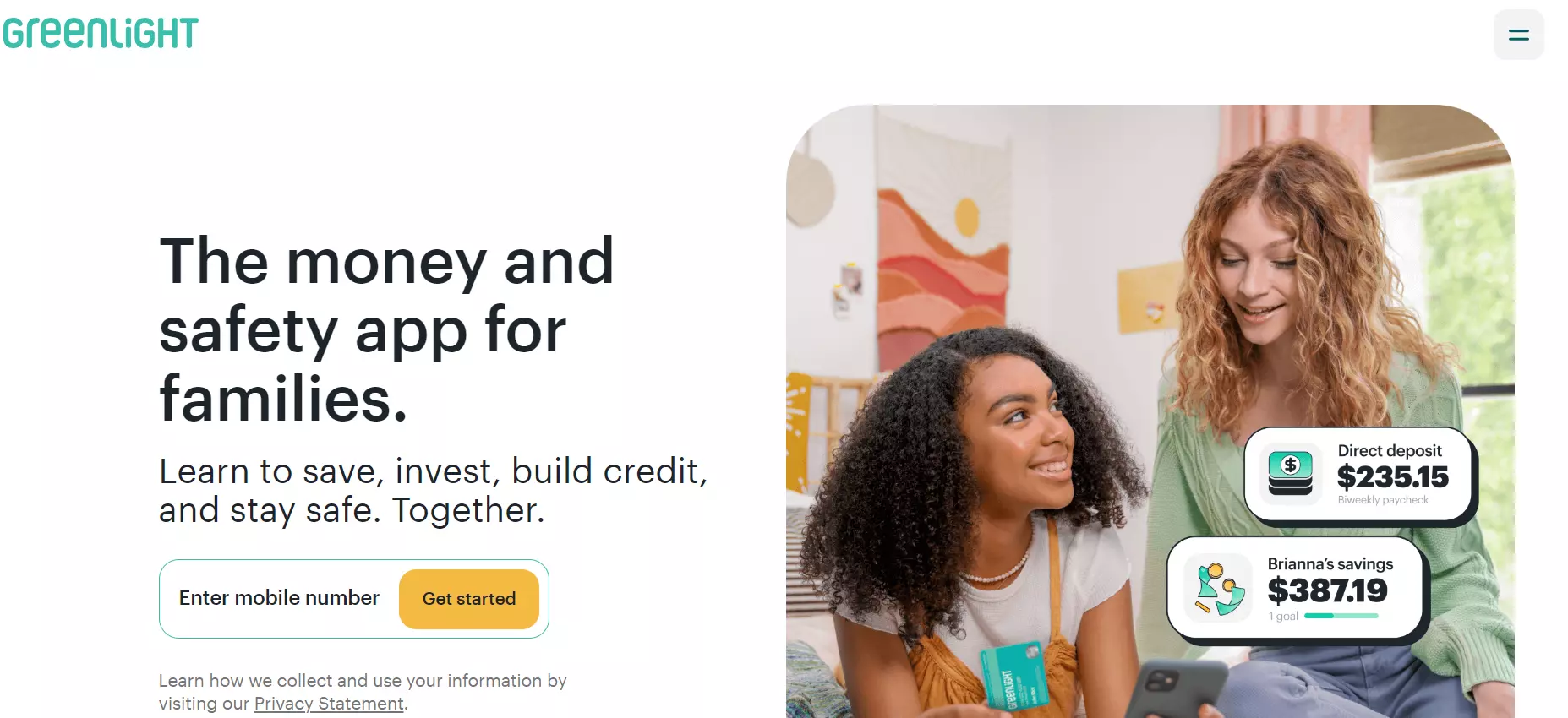
Mint - personal finance app.
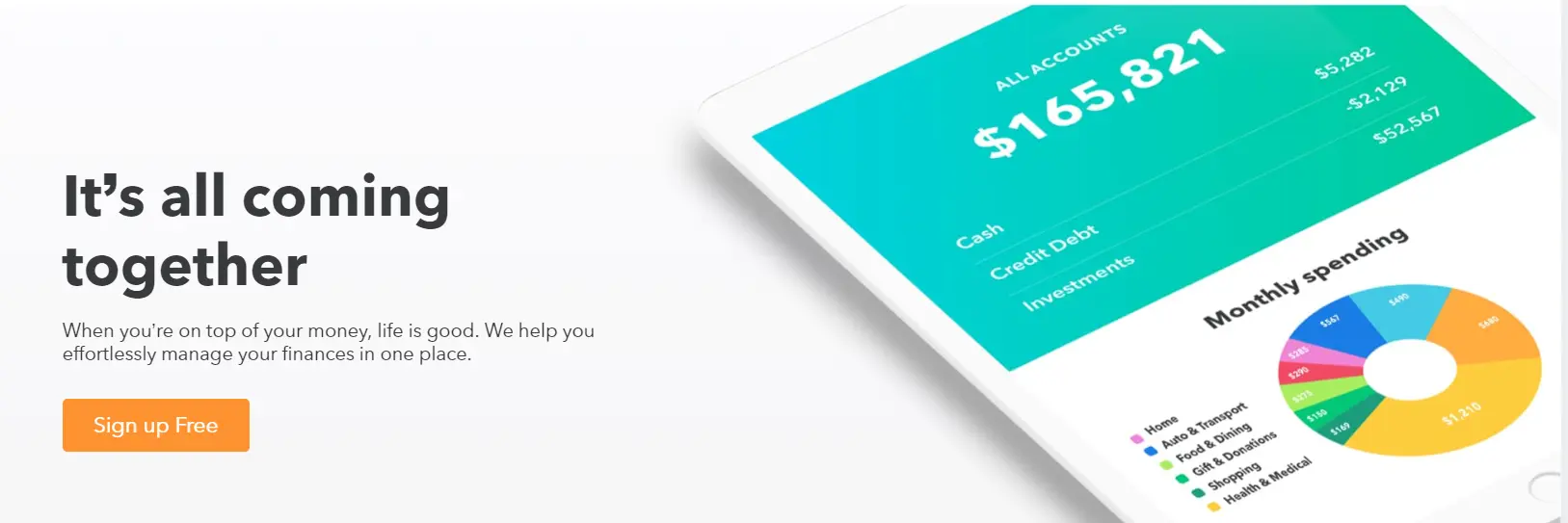
9. Unique identity and diversity
“Brands need to understand that we are all unique and we are all different people,”
from the research by Millennial Marketing [14]
Generation Z is the most diverse generation. In fact, for them diversity is the new normal. They differ in everything: sexuality, gender, racial, and ethnic identities, their approach to building careers, saving money, navigating platforms or surfing the Internet and more.
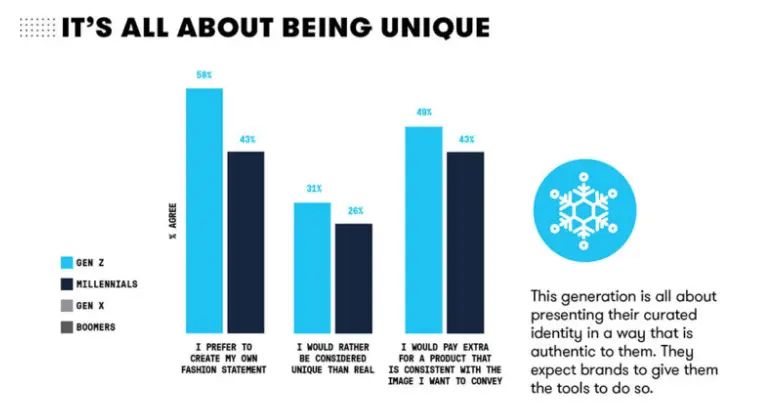
Source: Millennial Marketing [15]
According to Trendera–Awesomeness TV report [16]:
less than 60% of teens in the USA identify themselves as white
26% do not identify themselves as heterosexual
57% has a friend who is lesbian or gay and 52% has a bisexual friend
59% believes that surveys with questions about gender should include more options to choose
63% supports feminism, 74% - transgender rights and 80% - Black Lives Matter
+50% increase since 2000 in youth population who identify themselves as multiracial
Key Takeaway:
Brands of the future are those that are ready to recognize and support the unique identities and personalities of their consumers. We used to create segments, unite people into a few groups with similar behavior or values. Now, the number of segments will significantly increase and each of them requires a unique marketing approach.
Here is how AXE used the desire of modern teenagers to be themselves in their campaign #Isitokforguys [17]:
This is another example of how global brands are adjusting to new beliefs of the next generation. This year Gillette launched provocative anti-toxic masculinity ad campaign - “The best man can be” [18]. In 2 days it got millions of views and thousands of comments. As a result, 57% of Generation Z said they liked the advertisement, while almost 60% of Baby Boomers absolutely did not like it.
10. Not so digital
Brick-and-mortar stores… To be or not to be?
It is too early to abandon offline retail stores. 67% of Gen Z consumers prefer in-store shopping, rather than online according to the research by the National Retail Federation. 76% believe they can get a better shopping experience in a physical store [19].

Source: International Council of Shopping Centers (2018)
However, it is not so simple yet. The digital experience does affect their final decision about a purchase. In fact, Digital Natives won’t set foot in the brick-and-mortar store before a previous online research.
While purchasing online ⅔ of them said it is important for the retailer to have an offline store nearby [19]
⅘ of young shoppers are using mobile devices (texting with friends or family, checking price aggregators, looking for discounts etc.) while in the physical store [19]
8 in 10 representatives of Gen Z said they made a purchase as a result of seeing an advertisement on social media. YouTube has the greatest influence [19].
Key Takeaway:
Brick-and-mortar stores are as important for Gen Z as the existence of the online website. Merging physical and digital is the key to succeeding in the retail race.
A lot of online retail giants, such as Amazon, Blue Nile, JustFab, Bonobos, Athleta, Warby Parker, ModCloth and Casper, have already recognized the need of the offline experience for the next generation.
In 2015 Amazon opened its first brick-and-mortar store - Amazon Books. Since then it has expanded all over America and this is just the beginning.

Natalie Berg, the co-author of a book “Amazon: How the world’s most relentless retailer will continue to revolutionize commerce” said: “...very few people exclusively shop online or only in stores. They marry the best of both worlds.”
11. Engaged customers
“Please, give us your feedback” - a request that in the past has largely been ignored by clients, unless someone wanted to express their deep dissatisfaction with their purchase experience.
Times are changing. 44% of Gen Z will give their feedback and send ideas for further improvements if there is a chance [20]. Moreover, Generation Z is willing to share positive reviews twice as much as negative ones. According to Accenture’s report 40% of those interviewed confirmed they provide feedback often or very often [21].
At the same time, they don’t like to be ignored. 76% of the Post-Millennial generation want brands to respond to their feedback.
It also works the other way around. 41% of Generation Z will read at least 5 reviews before making a purchase [20].
Key Takeaway:
Customer feedback is the most valuable and effective way to increase sales. Luckily for businesses, Gen Z is willing to contribute to the company's growth and help other customers in their decision-making process. Ask smartly for feedback. Driven by the digital and on-the-go interactions, iGen expects it to be easy, interactive and, preferably, mobile.
Uber is a great example of a company that collects customer feedback and uses it for business growth.
This message is placed on the Uber’s website [22]:
“Real-time feedback about drivers means Uber can correct for issues big and small – while ensuring that only the best drivers stay on the road. We take this feedback seriously – depending on the circumstances, rider feedback may lead to deactivating a partner from the system or serve as validation that the driver is providing great service.”
Due to this policy, those drivers that get the lowest rating cannot work for Uber anymore. It makes employees care about the customer experience.
Moreover, it is very easy for riders to give their feedback: one tap in the mobile app will rate the drive from 0 to 5 stars. If something went wrong, the customer doesn’t need to write a detailed comment, he can simply choose from among the most common problems.

Source: Uber
Bottom line
Gen Z already has a huge influence on everything: business, politics, education even older generations. Grandfather with a smartphone? Or grandmother posting pictures on Facebook? This is not a big deal now. iGen easily opens the online world for everyone.
The good news? Gen Z is responsive, willing to collaborate and they are aware of what marketing is and have nothing against it as long as it has some value for them. Do not try to “handle” them because they can easily feel it and once you lose their trust, they will never return.
No matter which generation is your target audience now, sooner or later you will have to adapt to the iGen. Although the vast majority of Generation Z is still pretty young, it is better to start putting the pieces in place for marketing campaigns that speak to them.
Sources:
1. How Generation Z is changing the Internet?
3. Teens, Social Media & Technology 2018
4. How Coca-Cola targeted teens during the 2016 Olympic Games
5. Designing for digital natives: Are you ready for Generation Z?
6. 5 Differences Between Marketing To Millennials Vs. Gen Z
7. 5 Stats on Generation Z Buying Habits Marketers Need
8. Almost Half of Young Facebook Users Deleted the App This Year, New Survey Finds
9. Taking the Scissors to Annoying Labels
10. Buying a Belief: 4 Brands That Won by Taking a Stand
11. GEN Z IS LEARNING FROM MILLENNIALS' MONEY MISTAKES
12. Future Healthy: Gen-Z is leading the way with their saving habits
13. Case-study: Next
14. Gen Z Expects Brands to Support Their Identity
15. INFOGRAPHIC: Key Points for Marketers Looking to Reach Generation Z
16. Generation Z: Nonrebels With a Cause
18. #TheBestMenCanBe
19. Gen Z shoppers offer new hope for the mall
20. Every Gen Z stat you could ever ask for, right at your fingertips
21. Gen Z and Millennials leaving older shoppers and many retailers in their digital dust

Growth Marketing Manager @PushPushGo
Passionate about advertising, digital technologies and marketing itself. Life motto: "Growth starts out of the comfort zone".
Try PushPushGo to engage and connect with your audience.
Create an account and start testing!





